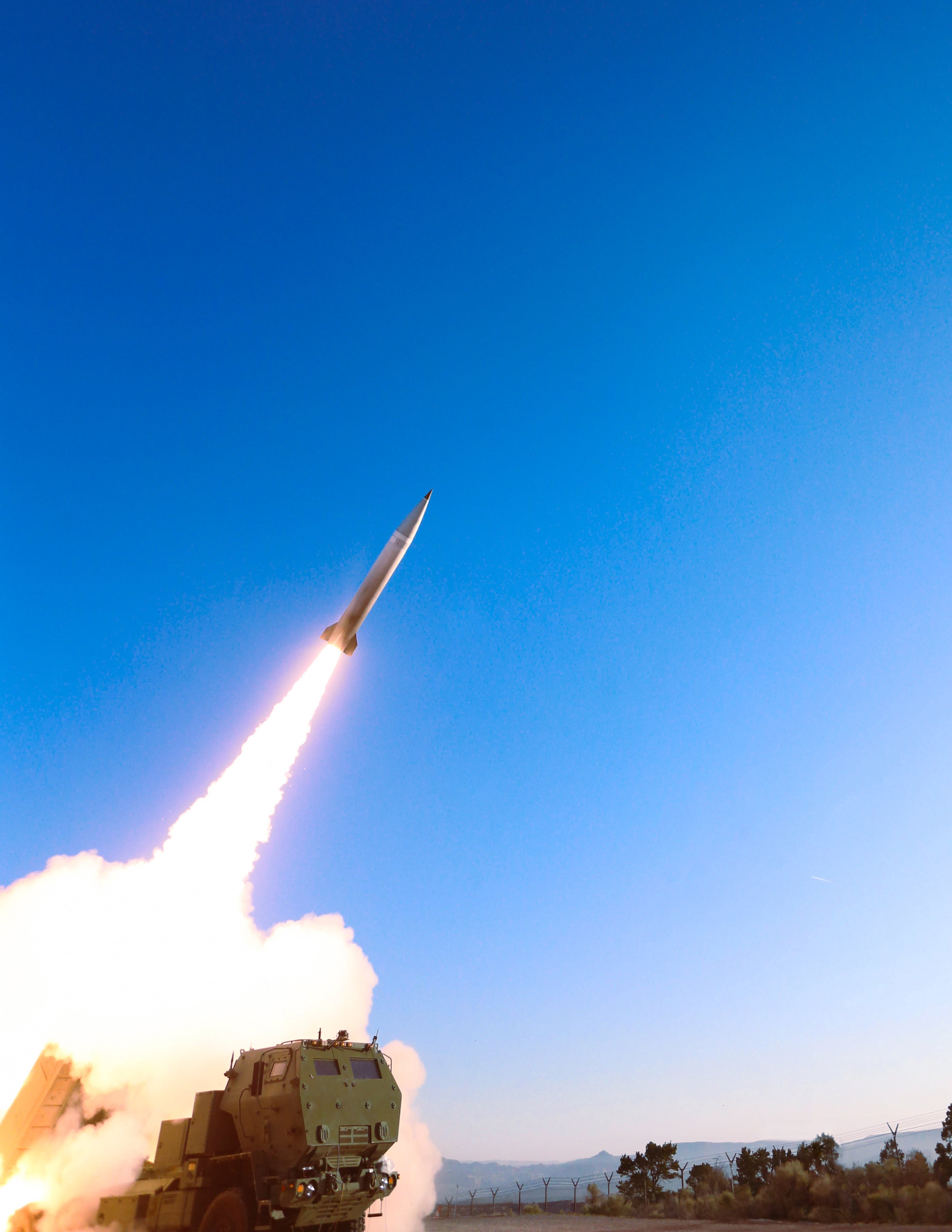AUSTIN, Texas – Future Army missile crews may not be crews at all.
Or if they are, those crews will include fewer people, more robots and have their launchers spread out over vast distances with an array of new fires at their fingertips.
The future batteries could carry rockets that pull oxygen from the air mid-flight, track moving targets and deliver big booms or silent electronic attack.
These are some of the Army’s Combat Capabilities Development Command goals that Hunter Blackwell, an official with the command’s aviation and missile center, shared Monday at the National Defense Industrial Association’s annual Future Force Capabilities conference.
Blackwell laid out the priorities and challenges the Army missile community will face in the coming years.
Long-range precision fires have dominated recent modernization conversations, showing the service will lean heavily on its rockets and artillery in complex, cluttered and deadly future battles.
RELATED

First, Blackwell noted, they’ll need to “break the enemy’s bubble” by eliminating anti-access, area-denial systems at all echelons. At the same time, they must protect friendly forces by getting fires with reach, range and speed beyond what’s currently available.
And to win, they’ll need to fire-on-the-move, to allow agile maneuver, putting the right force in the right spot at the right time. No more setting up guns and firing all day at various targets. It is shoot, move, shoot, all day long.
The most prominent, and so far promising system to get that done is the Army’s Precision Strike Missile program, under development by Lockheed Martin. The PrSM will replace the existing Army Tactical Missile System.
But the Army’s not simply building a bigger rocket with PrSM. As Defense News reported in 2021 during an early capability demonstration at Fort Sill, Oklahoma, developers expect systems such as PrSM to work in manned-unmanned teams.
That demonstration fired seven missiles from two rocket platforms, one manned, one unmanned, both offloaded from cargo planes to fire, and then loaded back on — simulating the quick setup, fire and takedown the Army needs.
“That means things like autonomy, platforms that can operate without the same soldier footprint to execute their mission. That gives us more firepower for the same soldier footprint,” Blackwell said.
Designers tackling the robot driver problem are working in the Autonomous Multi-Domain Launcher, or AML, program, Blackwell said.
Right now, they’re using the High Mobility Artillery Rocket System, or HIMARS, as the testbed for AML. By removing the cab and other items that support the human on the HIMARS, they add more space for, wait for it…more rockets.

But getting missiles to move around on automated trucks is one thing. The Army wants more from the actual munition. It needs to break past the current 500 kilometers range, and up to potentially 1,000 kilometers, Blackwell said.
Researchers are working the distance problem with solid rocket and alternate propulsion systems. Right now, nearly 80% of the fuel onboard the rocket is oxygen, Blackwell said. If they can successfully get the oxygen from the air en route to the target, that opens more space for more wicked effects inside the munition.
The warhead should strike and destroy a target on the move. That’s why future rocketeers and artillery soldiers must think in terms of where the target will be, not where it is.
The Army also wants “multi-mode seeker technology,” according to Blackwell. That tech will give the PrSM the ability to hit mobile, high-priority land and maritime targets.
Missile defenses that protect the rest of the soldiers on the battlefield would have to be available at all levels. Air defense systems run by missile teams would address low level threats to squads, platoons and higher-order, long range missiles. They’re not just watching the command post and leaving dispersed squads on their own.
It’s the economics of the fight: make the adversary use more expensive ammunition to counter less expensive munitions, Blackwell said.
That is a lesson learned on the U.S. side when fighting counterterrorism and counterinsurgency warfare in which cheap drones or shoulder-fired rockets plagued defenders with expensive missile defense systems, he added.
Todd South has written about crime, courts, government and the military for multiple publications since 2004 and was named a 2014 Pulitzer finalist for a co-written project on witness intimidation. Todd is a Marine veteran of the Iraq War.







